Heating Under Your RV: Is It Worth It?
Will heating under your RV keep you warmer in the winter months? Over one million people live full-time in an RV (motor home or travel trailer), many in cold winter climates. RVs are cheaply constructed with thin walls and poor insulation, even those touting 4-season insulation packages.
In winter months, RVs are cold. Many people wonder about adding a heater underneath their travel trailer or motor home to help. Indeed it might, but there are a few things you can do that will affect your warmth more directly and be way more efficient.
Jump right to the underbelly heating suggestions below.
We Recommend Skirting First
Skirting is one of the best things folks living in RVs or even tiny homes on wheels (THOWs) can do to increase the warmth of their homes. Skirting also prevents strong gusts of wind from lifting the trailer and possibly flipping it over. See our page on skirting for details. It would be silly to add a heater under your camper if you didn’t install good skirting first.
The Best Insulator Is Non-Moving Air
All insulation material is meant to create pockets of non-moving air. Whether it’s spun fiberglass, spray foam, or another product, it’s all about trapping air. See our page on insulation for more details.
Skirting should help accomplish this. Some materials do a better job than others. Billboard vinyl is a very popular skirting material, but it only works well if it’s pinned tightly to the underside of the structure and the ground. Otherwise, it will end up flapping in the wind. To avoid this scenario, a stiff material like thick foam board is better. However, it also needs to be firmly pinned or taped in place, lest a strong wind blow it down.
Keeping Your Fresh Water Pipe From Freezing
Heating your RV’s underbelly will do nothing to keep your fresh water line from freezing. For that, you need to take a much more direct and dynamic approach with heat tape and insulation. See details about that on this page: Prevent Freezing Water Lines In Your Tiny House
Keeping Your Holding Tanks From Freezing
Heating under your RV might help some in keeping your holding tanks from freezing. However, urine (because of it’s saltiness) doesn’t freeze until temps are below 25°F for some time. A more efficient approach would be to add holding tank heaters if not already so equipped. Many RVs, like the one shown below, have the tanks enclosed into the underbelly. This should be enough to keep the tanks from freezing as they will be warmed from the floor above.
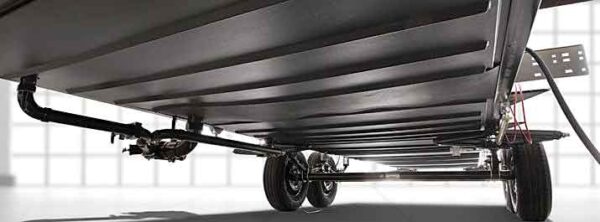
Sealing Your RV’s Underbelly
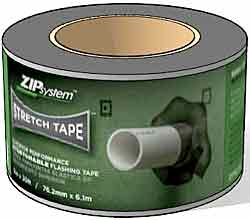
Some motor homes and travel trailers come with an underbelly liner of some kind, as well as insulation between it and the plywood floor above. These liners are laid into the frame and pinned in a few places. Mostly they are held in place by gravity and other RV components pressing against them. These have gaps all around the edges allowing cold air, not to mention bugs, snakes, and dirt to enter your home. Seal these seams with Zip System Flashing Tape or Eternabond tape. Press it on with a rubber roller to ensure good adhesion.
See the guy at Adventure Rocks sealing the bottom of his Jayco Pinnacle in this YouTube® video.
The picture shown above is Accessibelly, a removable plastic panel used in the Wildwood travel trailers. It’s very tidy looking and a great idea, but these are not airtight and would benefit from being taped and sealed.
Underbelly Tape
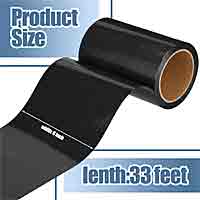
Here’s another recommended product, Underbelly Tape.
Frienda RV Repair Tape delivers a watertight sealing on RV roof, windows, and vent. It is also effective in shutting off moisture, dust, corrosive chemicals, and mold.
Its high coefficient of expansion permits the Frienda RV Repair Tape to expand or contract to adjust to extreme outdoor temperatures. Polyethylene adhesive also enables users to install the tape with little surface prep and still deliver a long-term to permanent repair.
Underbelly Lining
This underbelly lining from RECPRO will also do a great job protecting the insulation from road grime and water when towing. Use self-tapping screws with fender washers (which are large diameter washers with smaller hole) to secure, then tape all of the edges.
Doing this would be more effective and efficient than adding an under-the-belly heater.
Here’s Another Possible Underbelly Insulation Method
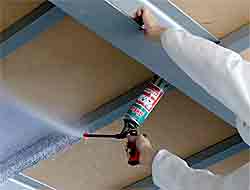 My RV has no underbelly insulation, just the plywood floor. If I was going to live in it over the winter I would add insulation.
My RV has no underbelly insulation, just the plywood floor. If I was going to live in it over the winter I would add insulation.
Because my motor home has the exhaust system and a moving drive shaft underneath adding an insulation like Rock Wool would not work. But this self applied expanding spray foam is just the ticket.
Caution needs to be used when applying so you don’t breath it or get it on your eyes and skin. Also cover the exhaust system, drive shaft, and anything else you don’t want it on before application. A 12 pack of spray cans cover about 240 board feet and curs in about 24 hours.
Akfix Thermcoat Spray Foam Insulation is the most innovative, easy-to-use, polyurethane-based for high-quality heat and sound insulation in the world. Akfix Thermcoat Self Expanding Foam is designed for professional workers but perfect for your everyday DIYer, too.

We develop, manufacture, and import our own products in addition to selling Atwood, Suburban, SHURflo, and other quality name brand products.
Here’s a good YouTube® video from The Lost Texan installing Coroplast to the underbelly of his travel trailer.
Coroplast is a corrugated plastic you can buy from Amazon in 4’x8′ sheets. It looks like it did a good job for him.
An Unexpected Underbelly Leak
If your spare tire is hung under your RV it has a cable and a crank system so you can let it down if you need it. There’s a good sized hole where the cable goes through the underbelly cover. An easy and effective way to block this hole is to install a wheel cover over the tire.
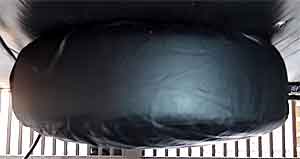
This idea was mentioned in the YouTube® video by Adventure Rocks.
Heating Your RV’s Underbelly
If you have accomplished everything discussed above, you still should use skirting, but you might also want to heat your RV’s underbelly.
Note: As with the picture at the top of the page, showing the underbelly of a Jayco 5th wheel, only the area between the main beams is sealed. On each side there is a foot of uninsulated space. While most of this area is covered by cabinets, jackknife sofas, and other interior features it still transmits the cold into the living envelope.
If you can not accomplish sealing your RV’s underbelly, you’ll benefit from adding some heat to your RV’s underbelly.
Add a String Of Construction Lights
Use this string of construction lights with 100 watt incandescent bulbs to strategically add heat under holding tanks, sewer pipe, and any open spaces.
The tough plastic protective cage and bright yellow color allow easy visibility, and protect bulbs from damage.
Run a heavy-duty extension cord directly to the 20 amp outlet on the RV park pedestal.
This is a safe and efficient way to add just enough heat, but not enough to keep pipes from freezing. Visit this page for details on how to keep your freshwater pipe from freezing.
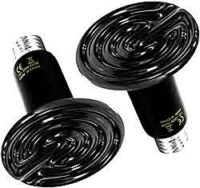
If You Can’t Find Incandescent Bulbs
Use these ceramic heat emitters if you can’t find incandescent bulbs. They are efficient, wasting no energy-producing light. Do not use LED bulbs as they do not create heat like the incandescent bulbs do.
Automatic On/Off
Use the Thermo Cube Thermostatically Controlled Outlet to automatically turn the lights on when temperatures fall below 35°F.
It will turn off when temps rise above 45°F.
You can run two strings of lights with this. With 100 watt bulbs, the power usage will be 500 watts per string.
Other RV Underbelly Heating Options
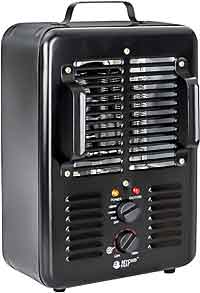
I’ve seen others on Facebook say they use a “Milkhouse Heater” which is just the old description of a rugged, all-metal space heater.
These are fine to use as they have a tip-over switch that will turn them off if they tip over. It’s also equipped with an automatic overheat protection device located inside the body of the heater. If a milkhouse heater gets too hot for any reason, the automatic overheat protection device will turn the heater off.
This small space heater is for rated for indoor use. It has 3 adjustable power levels: fan-only, 1300W and 1500W, providing targeted heating to meet your needs. When set to the anti-freeze setting, the Milkhouse heater will turn on whenever the temperature drops below 40°F.
Heating Your RV’s Storage Compartments
If you have an unheated storage space or wet bay, you may want to add a personal space heater. These miniature ceramic space heaters plug directly into any outlet and use about 500 watts. They are very efficient, but can pose a fire risk if anything falls directly onto or in front of them.
Add a smoke detector to the storage space as well.
Safe Space Heaters
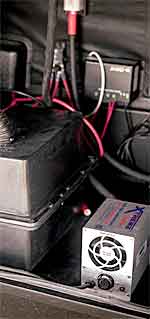
All space heaters have inherent safety issues. They get hot. If something gets too close, it could start a fire long before the safety measures kicks into operation. There is one safe space heater, but it’s pricey. Xtreme Heaters are as safe as can be made. The outside never gets warm to the touch, and the warm air coming out could never cause combustion. Designed to be used in boat engine compartments, it’s safe even around combustible fumes.
The Xtreme Heater uses power judiciously, ensuring optimal warmth without wastage. Self-regulating elements reduce power draw as the incoming air temperature rises, using only enough energy to maintain the element surface temperature, reducing energy usage.
A powerful fan maximizes circulation and even heat distribution within the confined space. The automatic thermostat offers much better control, maintaining temperatures above freezing while not heating to unnecessarily high temperatures in non-living spaces.
Unsafe Heating Methods of Heating Under Your RV
Never use a heat lamp. Heat bulbs use infrared heating to target a specific area. Most commonly, you’ll see them used in bathrooms to add extra warmth to the person standing at the vanity. These bulbs are unregulated and get VERY hot. If used improperly, the risk of fire is pretty high. I saw a Facebook comment showing a heat bulb in your basic utility clamp light just laid on the ground. If debris blows onto the lamp, a fire could result. Even the plastic socket in the light holder could catch fire.
Candles or any open flame should NEVER be used.
More pages of the Tiny Life Consulting website you’ll be interested in
RV Winter Living How to Prepare
Best Ways to Heat Your Tiny Home
Skirting for Tiny Houses, Travel Trailers, and RV’s
Prevent Freezing Water Lines In Your Tiny House


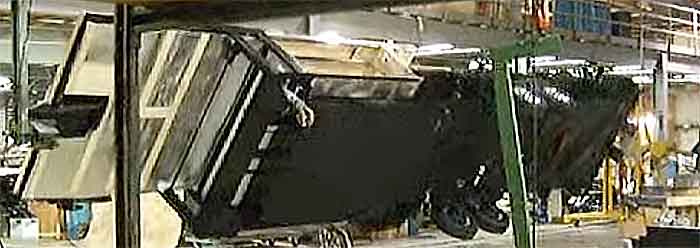
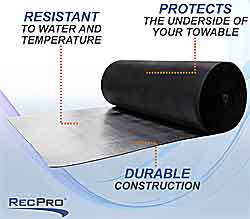

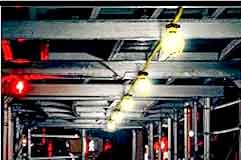
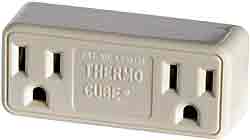




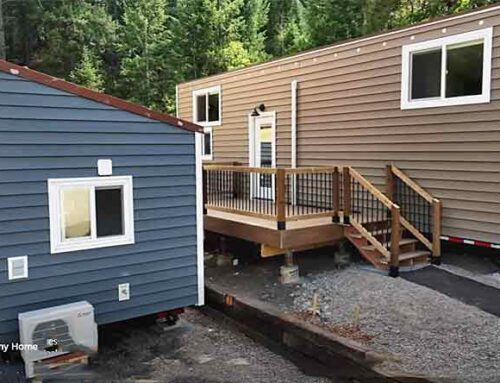
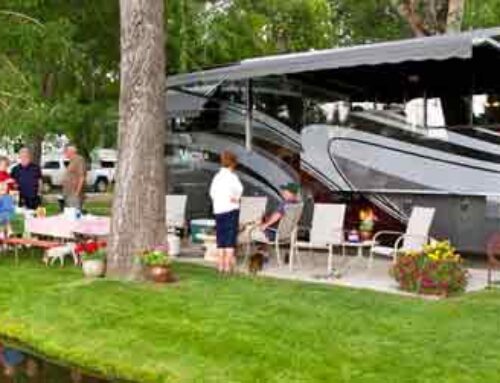
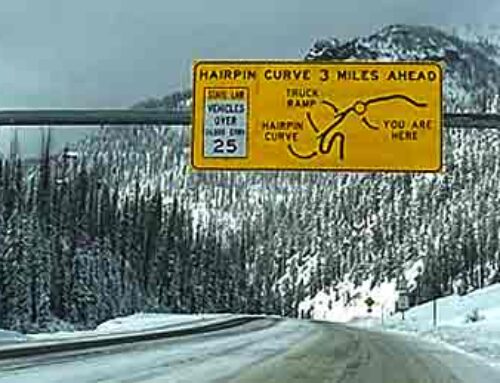
Leave A Comment